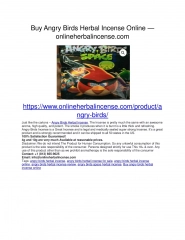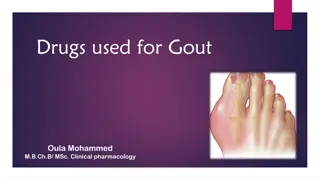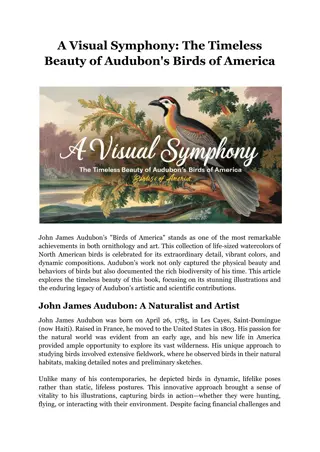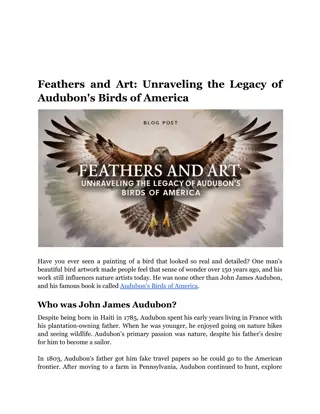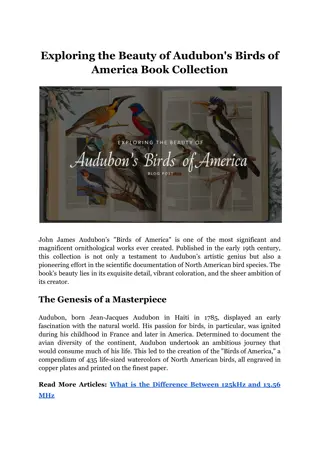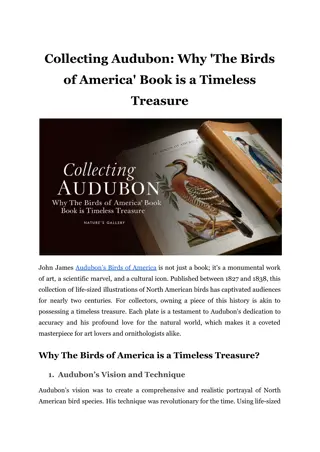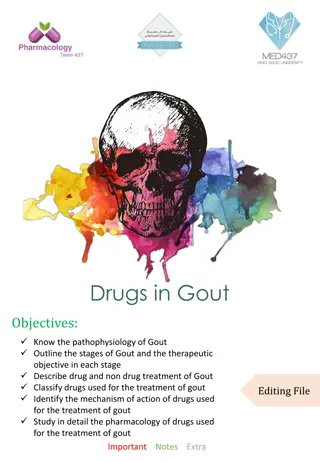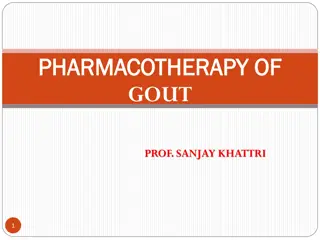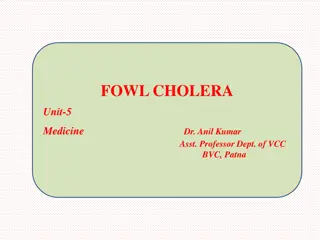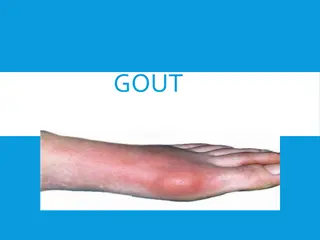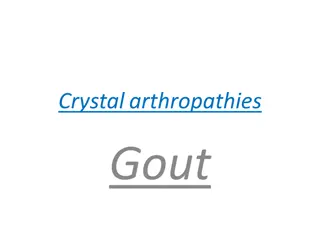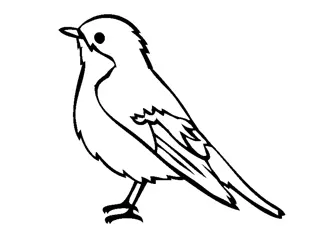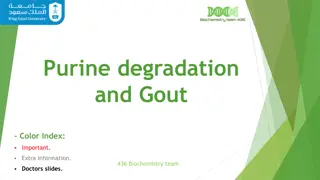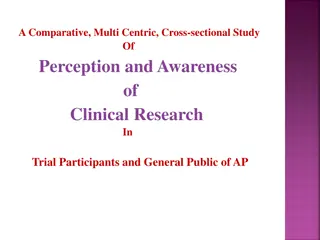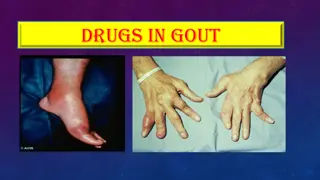Understanding Gout in Birds: Clinical Findings and Management Approaches
Gout in birds is a form of inflammatory arthritis caused by abnormal uric acid accumulation. It can affect both visceral and articular tissues, leading to various clinical findings such as nodules, polyuria, and anemia. Diagnosis involves physical exams, blood tests, and imaging. Treatment focuses on reducing pain, preventing further crystal deposition, and providing supportive care, especially in acute cases.
Download Presentation

Please find below an Image/Link to download the presentation.
The content on the website is provided AS IS for your information and personal use only. It may not be sold, licensed, or shared on other websites without obtaining consent from the author. Download presentation by click this link. If you encounter any issues during the download, it is possible that the publisher has removed the file from their server.
E N D
Presentation Transcript
GOUT Unit:3 Dr. Anil Kumar (Medicine) Asst. Professor Dept. of VCC
GOUT Introduction: The term gout in general term refers to a form of inflammatory arthritis. Gout is defined as abnormal accumulation of uric acid in the bloodstream and consequent deposition of uric acid on and within visceral tissues and articular surfaces. Gout is an inherited disorder of purine metabolism that causes hyperuricemia. Gout is rare in most other animals due to their ability to produce uricase, which breaks down uric acid Uric acid is the end product of nitrogen metabolism in birds, and it is produced in the liver. Host: Birds Etiology: Renal disease Increased protein ingestion Prolonged dehydration Reduced renal excretion of urates. All these will lead to formation Monosodium urate crystal precipitation in tissues
Classification: I. visceral or II. articular III. Both All species, regardless of age and sex, are susceptible. Some birds like Budgerigars are predisposed to articular gout. Clinical Findings: Uric acid deposits within synovial capsules and tendon sheaths of joints (the metatarsal and phalangeal joints). Uric acid deposits on and within the tissue of major organs. Diagnosis: Physical Exam White raised nodules on the feet and lower legs Polyuria and polydipsia (Parrots) Nonspecific (depression, anorexia, and depression)
Haemato-biochemical Findings: Complete blood count (CBC): I. Nonregenerative anaemia due to decreased secretion of erythropoietin OR prolonged cases of renal disease. Elevation in uric acid Inverse calcium-to-phosphorus ratio Radiographic imaging: Radiopaque opacities on articular and visceral surfaces Cytologic smears with gram s staining- made from raised white nodules on the feet reveal uric acid crystals USG: coelomic air sac system hamper the USG, but the hyperechoic areas within the kidneys may be indicative of uric acid crystal deposits in renal tissue. Gross necropsy/histopathologic examination: visceral gout is characterized by precipitation of urate crystals in the kidneys or on the serosal surfaces of heart, liver, mesenteries, air sacs, and/ or peritoneum.
Articular gout is characterized by deposits of urate crystals (also known as tophi) on both intraarticular and periarticular tissues. Urate deposits appears as chalky, white covering in both articular and visceral gout. Histologically, Uric acid crystals are found within the lamina propria of the proventriculus, ventriculus, intestines, and kidney. Treatment: The main goal is to: To reduce pain To reduce the incidence of tissue and articular deposition of uric acid crystals Supportive care Acute Cases: Hyperuricemia is treated with aggressive diuresis with intravenous or intrasosseous fluid therapy Decrease protein ingestion Prolonged SC fluid administration is often recommended
Chronic Cases: Response to treatment is poor to non-existent. Allopurinol 10 mg/kg PO q 4-12 hour Colchicine 0.04 mg/kg PO q 12-24 hour Vitamin A 33,000 IU/kg (10,000 IU/300 g) IM q 7 days. Omega-3 fatty acid (0.1-0.2 mL/kg of flaxseed oil to corn oil mixed at a ratio of 1:4 PO ) or added to food; ratio of omega-6/omega-3 is 4-5:1


